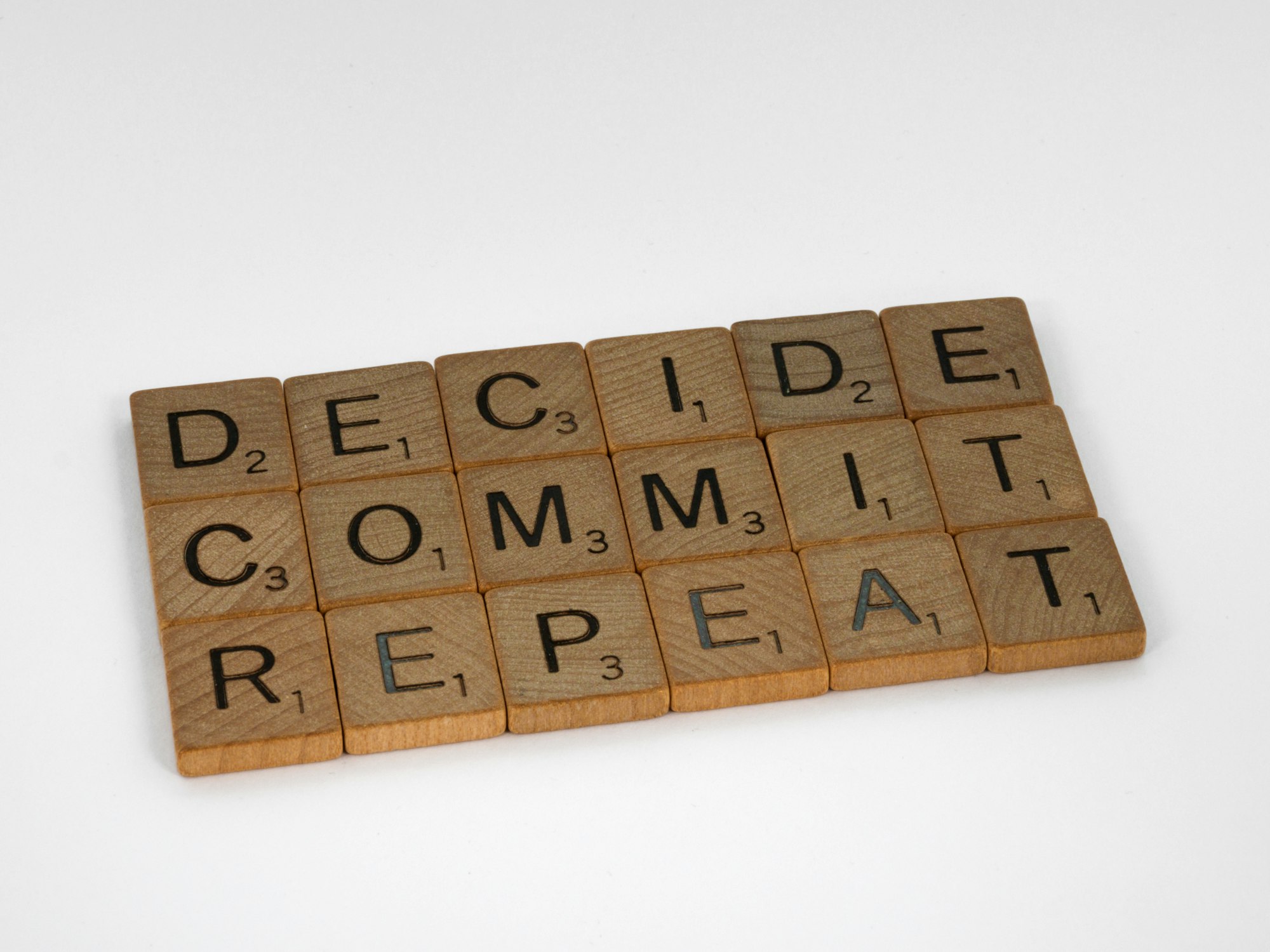Why Did I Do That? Understand Self-Sabotage (& How to Put It Right)
Have you ever been puzzled by your own behaviours or decisions? Use this article to explore the underlying reasons for unhelpful habits and self-sabotage and create a plan to help yourself today.

Action: Uncover the motivations that fuel detrimental habits and replace these patterns with constructive behaviour.
Content: We'll cover essential psychological principles to help you shed light and move beyond confusing behaviours that don't serve you.
Results: Upgrade your self-knowledge and sense of control.
Understanding Behaviour Motivation
Have you ever been puzzled by your own behaviours or decisions?
Perhaps you can think of a time when you:
- Haphazardly rushed in to help, only to later regret it.
- Made a snap purchase for a shiny new thing you likely knew was rubbish.
- Sabotaged your health goals for a quick fast-food guzzle.
- Engaged in an impulsive online spat, only to feel yucky afterwards.
All sorts of impulses and motivations drive our actions, and sometimes, what we do may surprise and confound us.
Understanding the why behind your actions reveals much about your emotional undercurrents and how they drive you toward or, indirectly, away from your deeper desires.
This article will help you uncover the psychological drivers behind confusing behaviours so that you can begin to identify and manage your genuine needs.
While we're rolling, here are a few more activities you might be hard-pressed to explain:
- Spending hours scrolling through social media while important tasks await.
- Avoiding a difficult conversation, even when it's crucial for resolving an issue.
- Purchasing a gym membership but rarely, if ever, turning up.

Do you see patterns of self-sabotage or procrastination in your own life?
By delving into the psychological reasons behind confusing behaviours, you can learn to uncover the underlying logic behind seemingly irrational habits.
This process will help you understand how emotional desires and pain avoidance may influence your decisions, from impulsive purchases to avoiding conversations that matter.
To begin untangling these curious knots, let's review some elemental human psychology.
Understanding Motivation
Every action you take is fuelled by the belief it will satisfy some emotional driver. Emotion—a strong feeling deriving from one's circumstances, mood, or relationships with others—contains the word (e)motion.
The primary purpose of motion (movement) is to ensure survival - to escape danger, create shelter, catch food, etc. So, every action we undertake is fuelled by some emotional driver. Otherwise, what would be the point?
In other words, motivation is an emotional expectation; an appetite waiting to be fed and satisfied by the outcomes of your behaviour.
Knowing Your Behaviour Drivers
Viewing motivation as an appetite, let's consider what lies beneath these desires.
By exploring your root motivations, you can learn to observe the needs and wants shaping your actions.
For instance, imagine you sign up for a marathon.
It might seem like a straightforward decision driven by the desire to stay fit or challenge yourself.
However, delving deeper into the motivations behind this decision may reveal various emotional wants.
- Emotional Appetite for Achievement: You may be driven by a deep-seated desire to achieve something significant and demonstrate your ability to set and reach a challenging goal. This appetite isn't just about physical fitness; it's about affirming your self-worth and potential - essential aspects of self-identity.

- Social Connection: Another motivation could be the longing for social connection and belonging. Training with others and sharing tips and encouragement offer a sense of shared values and direction.
- Meaning and Purpose: The journey to preparing for a marathon embodies personal growth. You build physical endurance, mental resilience, discipline, and the ability to push your limits. The desire to be stretched in pursuit of purpose and meaning makes the sufferings of life worthwhile.
This example showcases the desire to move towards activities that enrich our lives and bring us joy.
However, not all behaviours are directed towards seeking pleasure; some are rooted in the desire to avoid pain.
This shift towards avoidance marks a fundamental aspect of human motivation—our efforts to protect ourselves from discomfort and harm.
Pain Avoidance - A Powerful Motivator
Research in behavioural science and neurology suggests humans are wired to prioritise the avoidance of pain over the pursuit of pleasure.
This phenomenon, often referred to as negativity bias, suggests negative experiences or the threat of them have a greater bearing on our behaviour than positive ones.
This disposition may explain why behaviours that seem counterproductive at first glance are motivated by a rational desire to avoid pain, fear, or failure.
Acknowledging a tendency to sidestep discomfort illuminates another crucial aspect of our behaviour: Secondary gains.
Secondary gains represent the hidden rewards, often unacknowledged, that tether us to habits that do not serve us well.
Here are some stealth pay-offs (secondary gains) from typical patterns of negative behaviour:
- Self-sabotage: A desire to escape uncomfortable feelings.
- Procrastination: A desire to delay the potential for failure.
- Impulse Spending: A desire for immediate gratification.
- Avoidance: A desire to minimise emotional discomfort.
Do you recognise any of these tendencies in yourself?
From a secondary gains perspective, let's consider some rewards inherent in our earlier confounding behaviour examples:
- Spending hours scrolling through social media while important tasks await.
Logic: Immediate gratification and avoidance of discomfort associated with mundane or challenging tasks.
- Avoiding a difficult conversation, even when it's crucial for resolving an issue.
Logic: A desire to preserve one's emotional equilibrium and avoid the discomfort or fear of potential conflict or adverse outcomes.
- Purchasing a gym membership but rarely, if ever, turning up.
Logic: A symbolic commitment to one's health goals temporarily relieving guilt about inaction. The financial investment serves as a placeholder for progress.
When we examine the underlying motivations driving our actions, we find a degree of sane reasoning fuels problematic habits.
Sue's Tipple - A Foe More Than a Friend
My therapy client, Sue, was a smart and respected professional. In her early fifties, she seemed to have it all from a distance:
- Outwardly confident
- Smart and analytical
- Respected by colleagues
And, dare I say, a bit of a head-turner, too.
Yet, she grappled with a common issue that had plagued her over the years.

Sue was concerned about her drinking habits, especially her choices after a few glasses of red wine (promiscuous behaviour and impulsive buying were her main concerns).
She said, 'It always seems like a good idea, but I nearly always regret it. And then I do it again.'
Sue had developed the knack of brushing her concerns aside because a wind-down tipple was justified as her:
*Little treat
*Bit of indulgence
*Slice of reward and self-acknowledgment
Following an unrestrained night out, she'd woken up one morning, looked in the mirror, and was met by a sharp pang of disgust.
What am I doing?
Why do I keep doing this?
Why can't I get this under control?
Unable to rein herself in, she found this lack of control clashed with her self-image as a capable woman in complete control.
And that discrepancy was painful.
Sue was clear - something had to change. The question was, what?
While there might be a straightforward answer, the meaningful solution was less apparent.
As we've covered, problematic behaviour often serves a purpose.
For Sue, her drinking was a friend and ally - a gentle gateway to quickly, briefly decompress from mid-life pressures.
As Sue made tough executive decisions by day, she often assumed a drink would cushion work's hard edges and soften her mood. The warmth of a glass of velvety wine was a benevolent and inviting friend to briefly help cover the cracks of a dissatisfied romantic life and a shadow of loneliness.
From this perspective, Sue benefited from holding on to a habit that was causing her distress and concern.
Her drinking was - temporarily - filling an underlying void. As a consequence, her concessions towards alcohol now represented a problem of their own.
Unhealthy Habits & Secondary Gains
Many can relate to this struggle with unhealthy habits. This is a balance between working to understand and satisfy our genuine wants and a tendency to reach for convenient fillers we often later regret.
Understanding the deep-seated reasons for impulse actions and avoidance strategies offers insight into how to replace them with more positive habits.
Unmasking Secondary Gains

Secondary gains: As covered, these are the subtle comforts or benefits, often unnoticed, that maintain our investment in unhealthy behaviours.
A typical example of a secondary gain behaviour is revenge bedtime procrastination.
Busy people with little control over their daytime hours often stay up late to compensate for their lack of day-to-day autonomy.
Perhaps they lie in bed scrolling on their mobile or watch TV until late.
The primary deficit (lack of control in daily life) is countered by a secondary gain (reclaiming autonomy late at night).
Yet, this trade-off results in reduced and disrupted sleep—a deficiency that manifests in other issues over time.
So, it is helpful to reflect upon your habits and inclinations and the role secondary gains play in maintaining your investment.
Can you identify any personal unhealthy habits fueled by secondary gains?
To change an unhealthy habit, we must understand and reflect upon what keeps us invested in maintaining counterproductive behaviour.
Snapshot case studies:
For Mark, his habit of overworking served as a shield against confronting issues in his personal life. By immersing himself in work, he could avoid the emotional discomfort of a failing relationship.
For Emily, her chronic lateness was more than poor time management; it was a form of passive resistance against obligations she felt were imposed upon her, yet she didn't have the assertiveness skills to confront them.
In Sue's case, the unwinding ritual with wine symbolised relaxation and a break from work demands, concealing her need for camaraderie and meaningful engagement outside her professional life.
Drinking offered an illusion of companionship and relaxation in the silence of her apartment.
Yet, for some time, Sue sensed abstaining from alcohol wasn't a loss but a gift - and relaxation should be more profound, liberating and joyful than just leaning into a transient getaway from uncomfortable feelings.
She was ready to separate the perceived benefit of drinking (a relaxing ally) from its actual effects on her life (preoccupation and guilt).
This process required a brave, holistic look at Sue's life and marked the beginning of shedding a habit that had started as a help yet grown into a hindrance.
Beyond Self-sabotage & Moving Forward
By now, you hopefully have a sense of how to evaluate your own confusing behaviours.

When confusing or self-sabotaging habits arise, use the following steps to address your behaviour:
- Isolate the Behaviour: Identify the specific action or routine and the secondary gains. For Sue, this meant acknowledging her pattern of using wine as an escape.
- Isolate Your Expectations: Clarify what you believe this behaviour provides you. Sue expected her wine ritual to offer relaxation and an escape from loneliness.
- Assess the Reality: Evaluate the actual impact of this behaviour on your life. Sue realised her drinking led to regret and didn't truly fulfil her needs for connection or relaxation.
- Develop New Strategies: Determine what skills or habits you can adopt to meet your needs more healthily. For Sue, this involved seeking out social activities or hobbies that offered interesting companionship and a life beyond work.
These steps apply to all of us trapped in a trade-off with the secondary gains of unhelpful behaviours.
By following these steps, you can start to untangle yourself from habits that offer fleeting rewards yet detract from your overall well-being and fulfilment.
Takeaway and Summary:
If some of your behaviours confuse you or appear to cause direct or indirect harm, reflect honestly on what your secondary gains may be.
What keeps you invested in outdated or unhelpful behaviour (low expectations, laziness, fear, or rebelliousness)?
What are the perceived secondary gains of your unhelpful behaviour (e.g., avoiding failure, rejection or discomfort)?
What are the consequences of not challenging these habits (e.g., frustration, confusion, distress)?
What would be the Big Domino (compelling change) for your longer-term development (a new skill to learn or activity to undertake)?
Understanding and reflecting on your underlying desires will help you transcend impulsive behaviours.
These behaviours often offer immediate, yet deceptive, benefits (secondary gains), yet this misleading temporary solace often masks our actual needs.
By identifying these hidden motivations, you can see beyond the allure of quick fixes and work towards addressing your needs healthily.